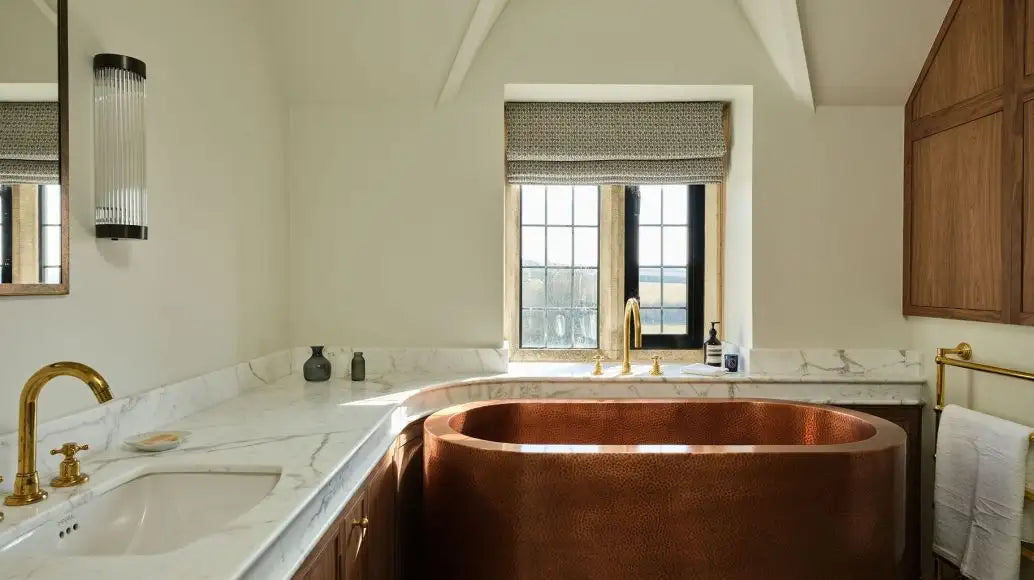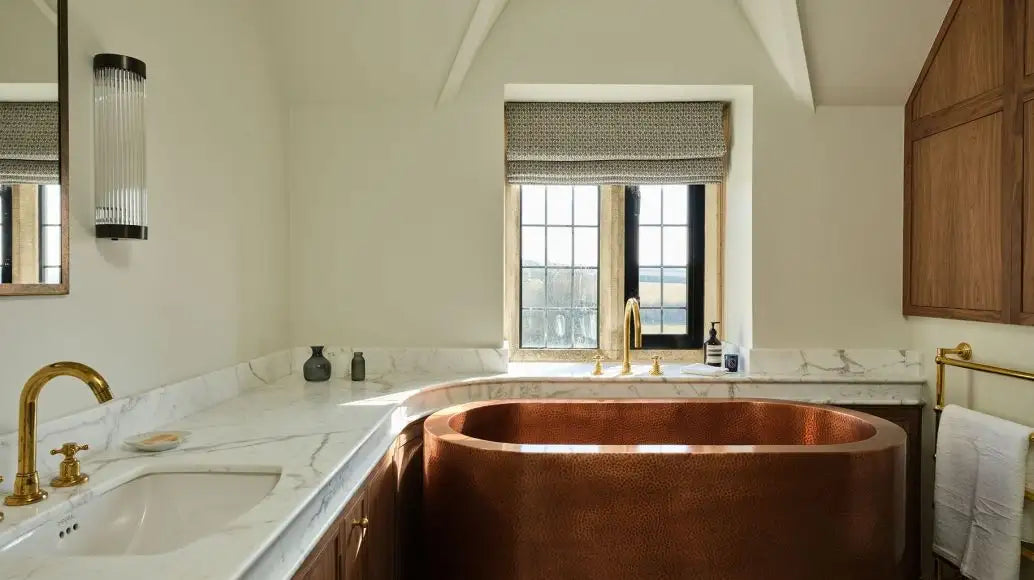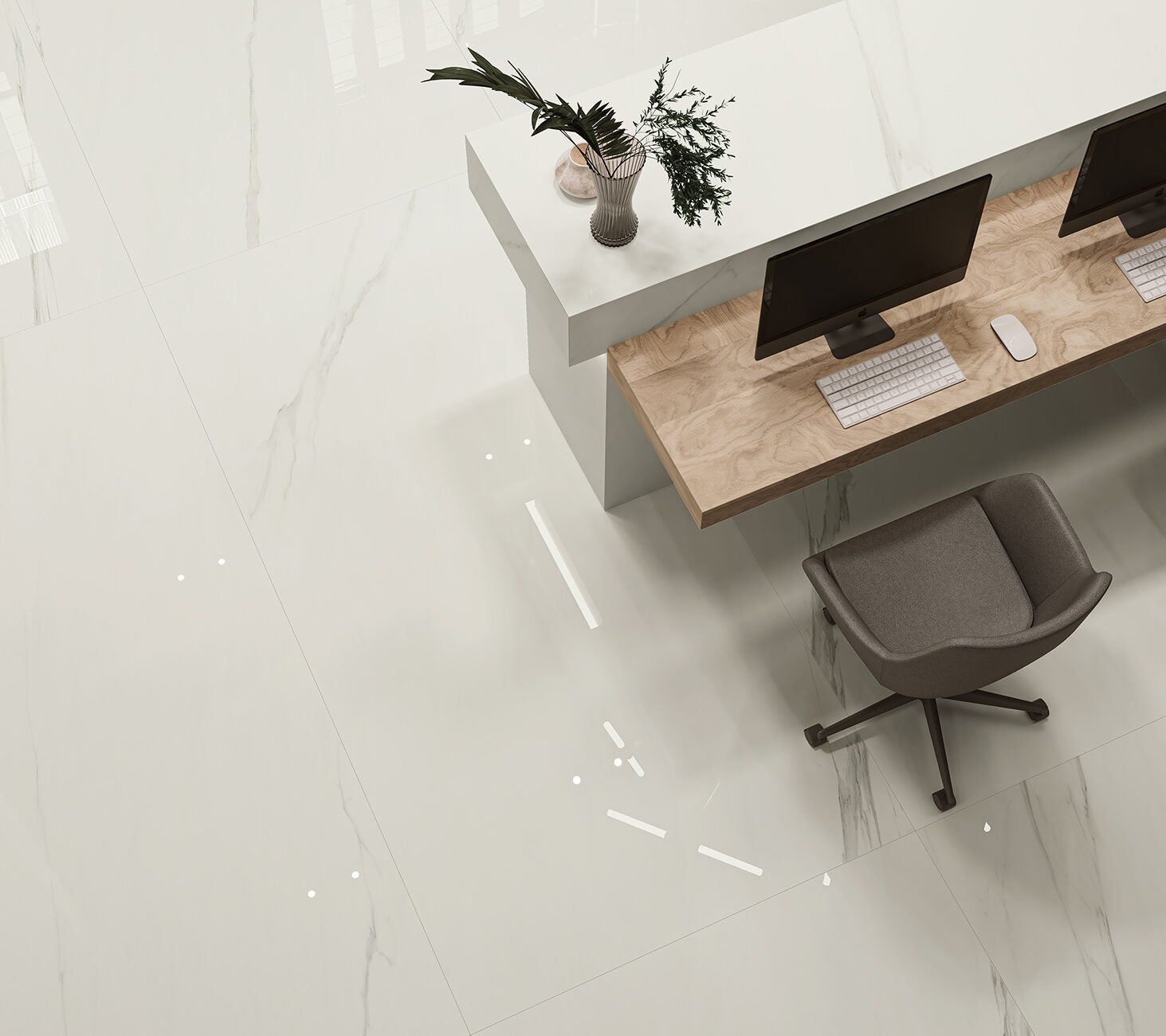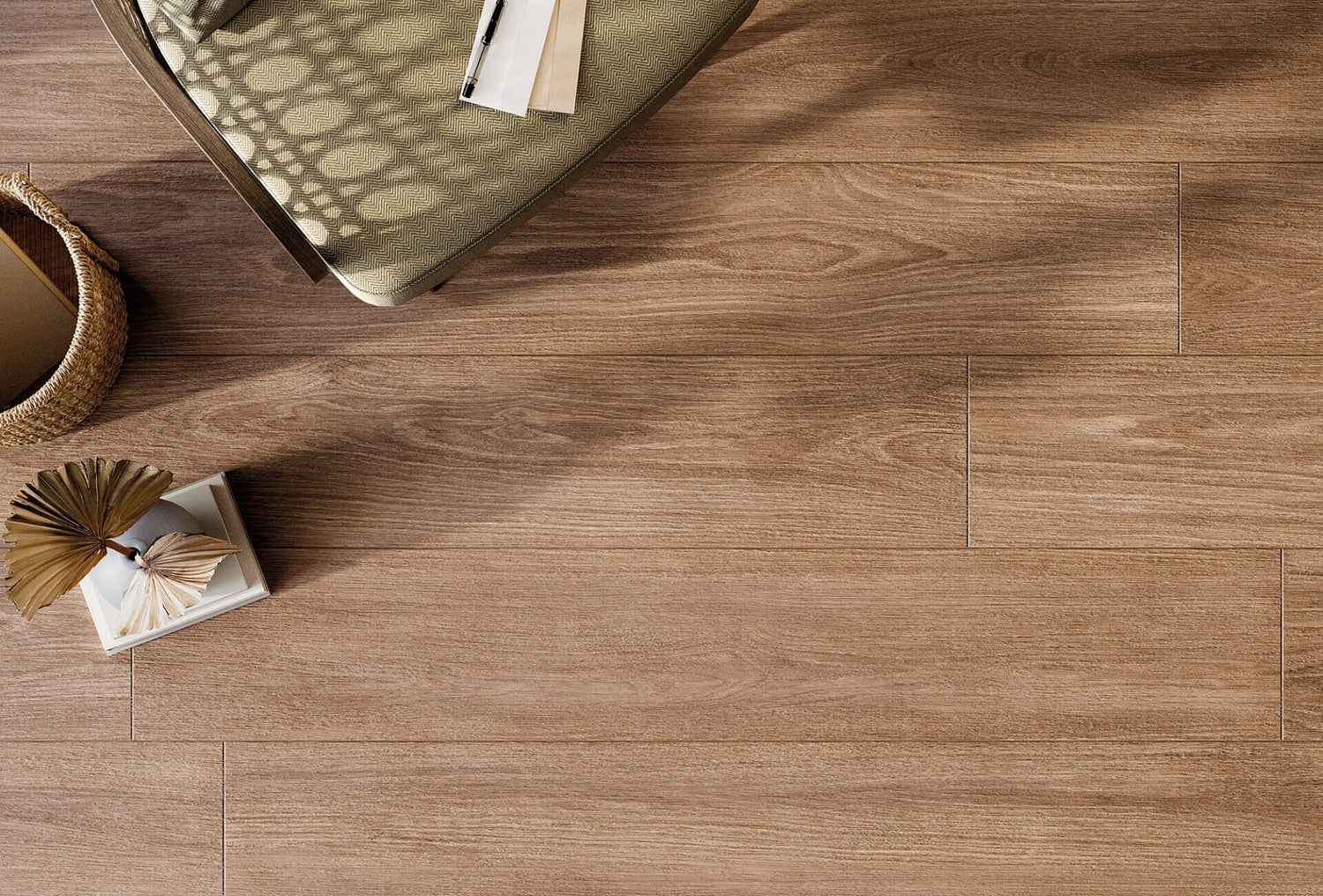Tiles are one of the most durable and design-led finishes you can choose for your home. They’re resilient, easy to clean and capable of lasting decades. Like any premium material, they benefit from thoughtful care.
Whether you’ve invested in robust porcelain, hand-crafted ceramics or luxurious natural stone, a consistent routine will protect your tiles, keep them looking stunning and save you time and money. This guide takes you through daily habits, sealing schedules, grout care, deep cleaning and how to deal with chips or stains.
Understanding Your Tile
Good maintenance begins with knowing exactly what you’ve installed. Porcelain and ceramic tiles are dense, non-porous and usually low maintenance, making them ideal for high-traffic areas.
Natural stones such as marble, limestone, travertine or slate are softer and more porous. They absorb liquids more readily and benefit from sealing and specialist cleaners.
Handmade or decorative tiles with glazes, inlays or irregular edges tend to be more delicate and reward a gentler approach. Outdoor and anti-slip tiles have textured surfaces that resist slipping but can trap dirt and algae over time.
Knowing which category your tiles belong to will guide how you clean them, which products to avoid and when sealing is necessary.

Daily Care and Cleaning
Once you know your tile type, the next step is daily care. Most maintenance issues can be avoided by adopting a few simple habits.
Grit and tiny stones brought in from outdoors can cause micro-scratches on glazed surfaces, so sweeping or vacuuming regularly is important.
Mopping with warm water and a neutral pH cleaner keeps tiles fresh without damaging their finish. Harsh bleaches, acidic sprays or abrasive powders can dull the surface or etch stone and should be avoided.
Spills should be wiped up as soon as possible, particularly if they’re oily, highly pigmented or acidic. Rotating rugs and mats from time to time also helps prevent uneven wear and fading.
The Importance of Sealing
Sealing plays an invisible but vital role in protecting your tiles. Porcelain and ceramic tiles generally don’t need sealing themselves but sealing the grout can help it stay cleaner for longer.
Natural stone tiles should always be sealed before grouting to prevent grout haze, and again after installation. Resealing every year or two depending on use pays off in long-term stain resistance and easier cleaning.
An easy way to check if it’s time to reseal is to drip a little water on the surface. If it darkens quickly, the pores are open and need resealing. When you do seal, opt for a penetrating sealer rather than a surface coating so the natural look of the tile is preserved.
Grout Care
Grout is often overlooked but it plays a crucial role in both the performance and appearance of a tiled surface. Because grout is more porous than tiles, it is usually the first area to show wear or discolouration.
Regularly cleaning grout lines with a gentle cleaner and a soft brush will help, as will sealing them to reduce absorption.
If you’re installing new tiles, choosing a grout colour that suits your lifestyle can make maintenance easier. Darker grout disguises day-to-day wear in kitchens and hallways, while lighter grout brightens bathrooms.
For stubborn marks on existing grout, a mild paste made from bicarbonate of soda and water applied carefully with a toothbrush can lift stains without damaging the surface.

Deep Cleaning
Even with consistent day-to-day care, tiled surfaces benefit from a seasonal deep clean. Over time, a thin film of soap, oils or minerals can build up, especially in bathrooms and kitchens.
Using a product specifically suited to your tile type every few months helps reset the surface. Natural stone should only be cleaned with stone-safe products to prevent etching or dullness.
Outdoor tiles, which are more exposed to the elements, can benefit from a power wash once or twice a year to remove algae and ingrained dirt. Working in sections and drying the area as you go will prevent streaks and watermarks.
Handling Stains, Chips and Scratches
No surface is indestructible, so it’s worth knowing how to respond to the occasional mishap.
If you discover a stain, always test any cleaner on a hidden area first, and on natural stone use only specialist removers.
Small chips can sometimes be repaired with colour-matched epoxy but larger damage may require replacing the tile. Keeping a few spares from your original batch is always a good idea.
Fine scratches on stone can sometimes be reduced with polishing powders or honing pads, though more serious damage should be assessed by a professional.
Protecting High-Traffic Areas
Prevention is always better than cure. Placing door mats or runners at entrances catches grit before it enters the home.
Felt pads under chairs, stools and tables prevent scratches from everyday movement. Heavy furniture or appliances should always be lifted rather than dragged.
In kitchens it helps to have absorbent mats in front of sinks and hobs where spills are most frequent. Small actions like these dramatically extend the life of your tiled surfaces.

Seasonal and Environmental Factors
Tiles naturally expand and contract with changes in temperature, especially where underfloor heating is present. Expansion joints should always be left clear and flexible to allow for movement.
Sealants should be checked periodically to make sure they haven’t hardened or cracked. Underfloor heating and tiles are a perfect match but temperatures should be increased gradually rather than all at once to avoid thermal shock.
Because heated floors dry faster, slightly damp mopping is usually more effective than a wet mop. Inspect grout and sealant once a year for hairline cracks or movement and address them promptly to maintain a watertight surface.
Long-Term Care
Tile care is about building light, regular attention into your routine rather than waiting for problems to appear.
Sweeping weekly, mopping with gentle products, sealing grout periodically and checking joints every so often will prevent the vast majority of issues. By treating your tiles as an investment you preserve their premium finish and enjoy them as a feature rather than a chore.

Final Word
Tiles are more than just a surface. They’re an integral part of your home’s style and functionality. With an understanding of your tile type, a straightforward cleaning routine and a little forward planning for sealing and grout care, you’ll keep your tiled surfaces looking exceptional for years to come.
A small amount of attention now creates a lifetime of enjoyment and keeps your home’s finishes feeling fresh, clean and truly luxurious.





